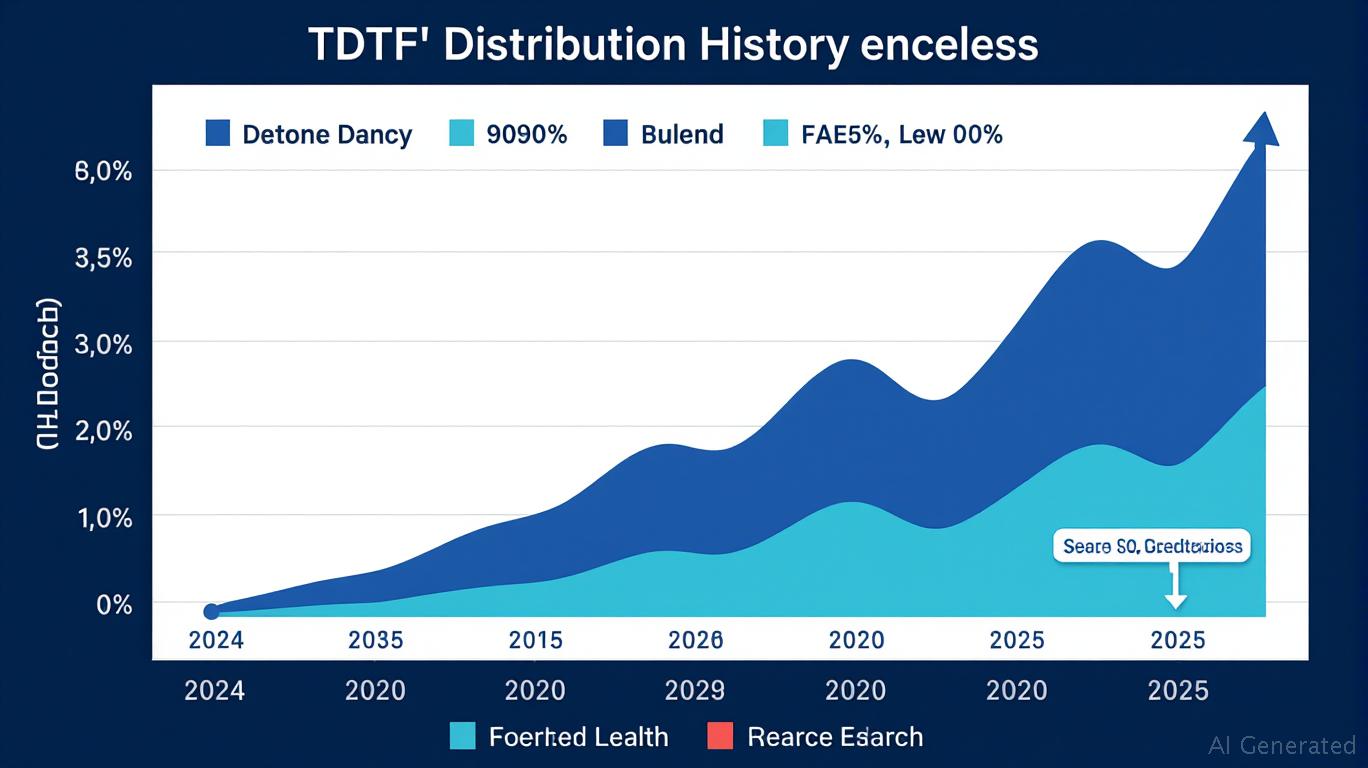Navigating TIPS Volatility: TDTF's Dividend Shift and Strategic Implications
The FlexShares iBoxx 5-Year Target Duration TIPS Index Fund (TDTF) has long been a cornerstone for investors seeking inflation protection and intermediate-term bond exposure. However, recent shifts in its dividend distributions and looming expense ratio changes are sparking questions about its role in portfolios amid evolving macroeconomic conditions. Let's dissect these developments and their implications for inflation-hedging strategies.
The June 2025 Dividend: A Slight Dip in Context
The fund's June 2025 distribution of $0.187 marks a slight decline from its June 2024 payout of $0.1898, but it remains robust compared to lower quarterly distributions like the $0.1202 in July 深知. This variability reflects the inherent sensitivity of TIPS to inflation expectations and interest rate movements. While the dip might signal moderation in near-term inflationary pressures, it also underscores the fund's reliance on dynamic market conditions.

The fund's May 2025 distribution of $0.1369 and its June payout suggest a cyclical pattern: higher distributions during periods of rising inflation expectations (e.g., 2024's aggressive Fed rate hikes) and lower ones when markets anticipate stability or disinflation. This makes
a barometer of inflation dynamics, but also a reminder that its income stream is not static.Expense Ratio Dynamics: The Cap's Expiration and Its Impact
TDTF's 0.18% net expense ratio—one of the lowest among TIPS ETFs—is set to expire on July 31, 2025, after a contractual expense cap by
. Without an extension, expenses could rise, reducing net returns. Investors must weigh this risk against the fund's 4.45% YTD return and 6.87% 1-year return, which reflect its success in capturing TIPS' inflation-linked income.The expiration could also narrow the fund's margin for error in a challenging rate environment. If yields rise further, the fund's 4.88-year modified duration may amplify price volatility, while higher expenses could compound losses. Conversely, if the expense cap is renewed, TDTF's cost advantage over peers like IPE or TIP could persist, reinforcing its appeal.
TDTF's Role in Inflation-Hedging Portfolios
TDTF tracks the iBoxx 5-Year Target Duration TIPS Index, offering exposure to intermediate-term inflation-protected securities. Its 5.77-year weighted average maturity balances income generation with interest rate risk, making it suitable for investors seeking a middle ground between short-term TIPS (less income) and long-term bonds (higher duration risk).
However, its non-diversified structure—exposure to a limited number of issuers—adds concentration risk. Pairing TDTF with shorter-duration TIPS ETFs (e.g., PRTY) or commodities like gold could mitigate this, especially as the Federal Reserve's policy path remains uncertain.
Strategic Considerations Amid Fed Uncertainty
The Federal Reserve's pivot to a “data-dependent” stance on rates has created ambiguity. If inflation surprises to the upside, TDTF's TIPS holdings could shine, as coupon payments rise with the CPI. Yet, a prolonged period of low inflation or a Fed pivot to cuts might reduce income growth while boosting bond prices—a classic “taper tantrum” scenario.
Investors should monitor two key indicators:
1. CPI reports: Rising inflation would support TIPS' coupon growth, boosting distributions.
2. 10-Year Treasury yields: A sustained rise above 4% could pressure TDTF's price but enhance its yield appeal.
Investment Advice: Positioning for Volatility
- Hold TDTF as a core inflation hedge if you believe near-term inflation will remain elevated. Its June 2025 distribution reaffirms its income-generating capacity, even amid minor dips.
- Dollar-cost average into TDTF ahead of the July 2025 expense cap expiration to mitigate potential cost increases.
- Diversify with short-duration TIPS (e.g., PRTY) to balance interest rate risk and pair with commodities for multi-asset inflation protection.
- Avoid overconcentration: TDTF's non-diversified structure requires pairing with broader bond funds like BND or corporate debt to reduce issuer-specific risk.
Conclusion
TDTF's recent dividend trends and expense dynamics highlight the delicate balance between inflation-linked income and evolving market conditions. While the June 2025 distribution signals moderation rather than a crisis, the expiration of its expense cap adds a critical layer of uncertainty. Investors should treat TDTF as a strategic, rather than core, holding—leveraging its TIPS exposure while maintaining flexibility through diversification. As the Fed's path unfolds, staying nimble and cost-aware will be key to navigating the inflationary landscape.
Sign up for free to continue reading
By continuing, I agree to the
Market Data Terms of Service and Privacy Statement

Comments
No comments yet